Guinea pigs are beloved pets and an essential part of many families. As caring pet owners, it’s crucial to ensure their dietary needs are met and to keep an eye on what they consume to prevent any potential risks. One question that often arises is whether guinea pigs can safely consume craisins.
This safety guide explores the topic in a comprehensive manner, providing essential information for guinea pig owners who want to make an informed decision about introducing craisins into their pet’s diet.
Before we dive into the details, let’s take a quick look at what craisins are and why they may or may not be suitable for guinea pigs.
Key Takeaways:
- Craisins are a popular snack often enjoyed by humans
- Guinea pigs have specific dietary needs that must be met to maintain their overall health
- Determining if craisins are suitable for guinea pigs requires an understanding of their nutritional content and potential risks
- It’s essential to introduce craisins to your guinea pig’s diet in moderation and monitor any potential health concerns
- Consulting with a veterinarian when introducing new foods to your guinea pig is always recommended
Understanding Guinea Pig’s Dietary Needs
Guinea pigs have specific dietary requirements that are essential to their health and well-being. It’s important to understand these needs before introducing any new foods, like craisins, into their diet.
The primary components of a guinea pig’s diet include hay, fresh vegetables, and a limited amount of pellets. Hay should make up the majority of their daily food intake, as it provides the necessary fiber for healthy digestion and prevents dental issues. Guinea pigs should also have access to fresh, clean water at all times.
When choosing vegetables for your guinea pig, select those that are high in vitamin C, like bell peppers and kale. This vitamin is crucial for their immune system and overall health. However, avoid feeding them too much fruit, as it contains high levels of sugar that can lead to obesity and other health problems.
A well-balanced diet is essential for guinea pigs, and it’s crucial to ensure they have enough vitamin C, fiber, and other nutrients. Overfeeding and unhealthy dietary habits can lead to obesity, dental issues, and other health concerns.
Introducing Craisins to Your Guinea Pig’s Diet
Adding craisins to your guinea pig’s diet can be beneficial, but it’s vital to do it correctly. Start by offering small amounts to avoid overwhelming their digestive system and observe their reaction to it. If there are no adverse reactions, you can gradually increase the serving size over time.
It’s recommended to mix the craisins with their regular diet, to avoid upsetting the balance of nutrients. Too many craisins can cause digestive issues and lead to obesity. Also, avoid flavored or sweetened craisins that contain added sugars or other ingredients that may be harmful to your furry friend.
Remember to offer fresh water alongside the craisins and monitor your guinea pig’s eating habits for any potential health concerns. Stick to the recommended serving size to ensure their overall well-being.
Offering Variety
Guinea pigs love snacking, so occasionally adding new foods to their diet can keep them interested and engaged. Consider offering other healthy fruits and veggies, like apple slices, carrot sticks, or cucumber slices. This can provide a much-needed boost to their nutrient intake and keep their diet well-balanced. Remember to introduce new foods gradually and monitor their reaction to them.
Nutritional Value of Craisins
Craisins, or dried cranberries, are a tasty treat that can add some variety to your guinea pig’s diet. However, it’s essential to understand their nutritional content to ensure they’re not causing harm.
Craisins are a good source of fiber, which can aid digestion and prevent constipation. They also contain vitamins C and E, which are essential for your pet’s overall health and immune function. On the downside, craisins are high in sugar and calories and can result in weight gain if consumed in excess.
It’s essential to remember that craisins should not replace the primary components of a guinea pig’s diet. Instead, they should be a small addition served only in moderation.
Potential Risks and Health Concerns
Feeding your guinea pig craisins may lead to various risks and health concerns that can negatively impact their well-being. One primary issue is that craisins are high in sugar which can cause health problems such as obesity and dental issues.
Additionally, craisins contain additives and preservatives that can cause digestive issues, leading to diarrhea or constipation. They can also increase the potential risk of developing bladder stones, which can be a painful and costly condition to treat.
It’s essential to monitor your guinea pig’s reaction to craisins carefully and only provide them in moderation. Even a small amount can cause discomfort or a negative reaction. If you notice any adverse symptoms, such as lethargy, decreased appetite, or unusual behavior, consult with your veterinarian for guidance.
Serving Size and Frequency
When offering craisins to your guinea pig, it’s crucial to consider their serving size and frequency. While craisins can be a treat, they should not be a substantial part of their diet.
The recommended serving size for craisins is a maximum of one or two craisins per week, with a frequency of once or twice a month. Overfeeding craisins can lead to weight gain, dental issues, and digestive problems.
It’s crucial to remember that craisins should not replace essential foods in your guinea pig’s diet. They are high in sugar and can cause imbalances in their overall nutrition.
Consult with your veterinarian for a tailored feeding plan that ensures your guinea pig receives all necessary nutrients while also enjoying the occasional treat.
Alternatives to Craisins for Guinea Pigs
If you’ve decided that craisins aren’t the best option for your guinea pig, don’t worry. There are plenty of healthy alternatives that can still satisfy your furry friend’s cravings. Some suitable alternatives include:
- Fresh fruits such as apples, bananas, and strawberries
- Vegetables like carrots, cucumbers, and lettuce
- Small amounts of dry foods like oats or barley
- Pellet treats made especially for guinea pigs
Remember to introduce new foods gradually and in small quantities to avoid stomach upset or indigestion. Pay attention to your pet’s reactions to new foods and adjust their diet accordingly. By providing well-balanced nutrition, you can ensure your guinea pig lives a happy and healthy life.
Incorporating a variety of healthy foods into your pet’s diet can also help to prevent boredom and promote their mental stimulation. By regularly providing alternatives to craisins, you can keep your guinea pig engaged and content.

Digestive System and Craisins
As herbivores, guinea pigs rely on a delicate balance of fiber and nutrients to maintain healthy digestion. While craisins may seem like a tasty treat, they can potentially disrupt this balance and cause digestive issues for your furry friend.
Craisins are high in sugar, which can lead to bloating, diarrhea, and other gastrointestinal discomforts in guinea pigs. Furthermore, their tough texture can be difficult for guinea pigs to break down, potentially causing blockages in their digestive tract.
If you decide to offer craisins to your guinea pig, it’s important to do so in moderation and under close supervision. Ensure that your pet has adequate access to fresh water and monitor closely for any signs of discomfort or unusual behavior.
If your guinea pig experiences any digestive issues, discontinue feeding craisins immediately and consider consulting with a veterinarian for further guidance. As always, the key to maintaining your guinea pig’s health lies in providing a balanced and nutritious diet that meets their unique needs.
Signs of Allergies or Discomfort
Although craisins are safe for most guinea pigs, some pets might develop allergies or discomfort after consuming them. It’s crucial to keep a close eye on your furry friend and recognize any unusual symptoms promptly.
If your guinea pig shows signs of discomfort such as diarrhea, bloating, or stomach pain shortly after eating craisins, it is likely that they have an allergic reaction. Other symptoms of allergies include sneezing, coughing, and itching.
If you notice any of these symptoms, remove craisins from their diet immediately and consult a veterinarian for guidance. In severe cases, allergies can cause anaphylactic shock, which can be life-threatening for your pet.
Consult with a Veterinarian
Feeding your guinea pig can be a delicate process, and it’s crucial to prioritize their health and well-being. If you’re still unsure whether craisins are a suitable addition to your furry friend’s diet, consider scheduling a consultation with a veterinarian who specializes in small animals.
A veterinarian can evaluate your guinea pig’s overall health and dietary needs and provide personalized guidance on whether craisins can be safely incorporated into their diet. They can also recommend appropriate serving sizes and provide insights into other healthy treats and snacks that can satisfy your pet’s nutritional needs.
Even if you’ve already introduced craisins to your guinea pig’s diet, it’s always a good idea to check in with a veterinarian periodically to monitor their health and ensure their dietary needs are being met. Remember, your guinea pig’s health and happiness should always come first.
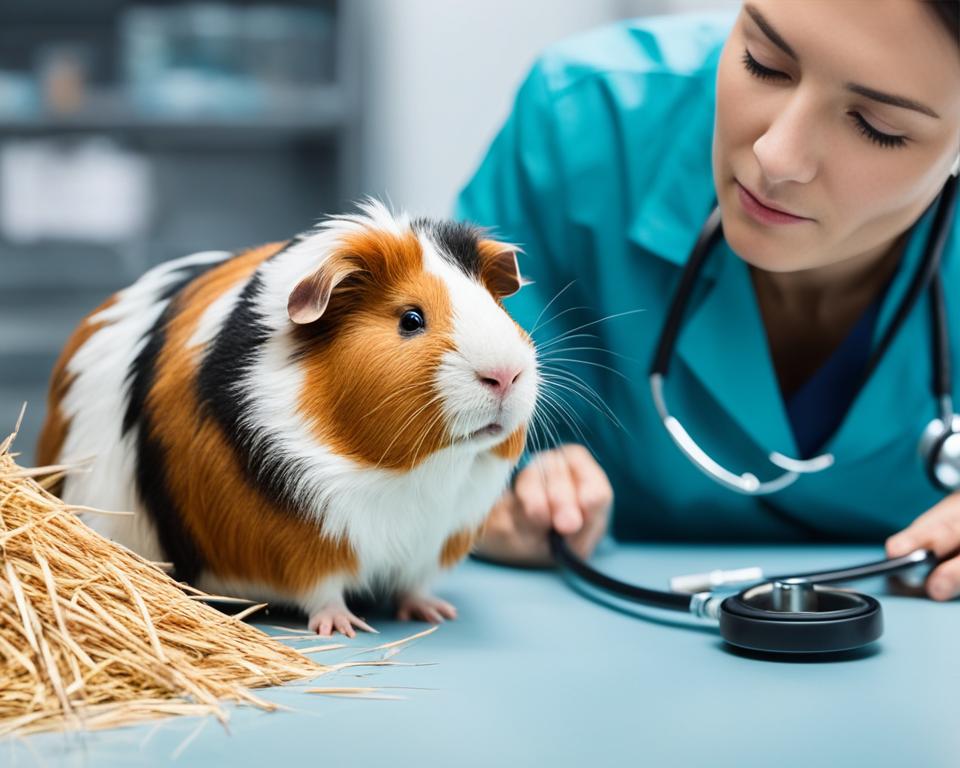
Conclusion
While guinea pigs can consume craisins, it’s essential to follow certain precautions and guidelines to avoid any health risks. It’s crucial to ensure a balanced diet for your furry friend, and craisins should only be a small addition to their regular meals. Always start by introducing small amounts and carefully monitor their reactions. In case of any allergies or discomfort, stop feeding craisins immediately and consult with a veterinarian. Remember, there are many safer alternatives to craisins that can provide the same nutritional benefits.
It’s our responsibility to keep our pets safe and healthy, and providing them with the right food and nutrients is a vital part of that. We hope this guide has provided useful information and insights to help you make an informed decision about incorporating craisins into your guinea pig’s diet. Remember to prioritize their health and well-being and consult with a veterinarian if you have any concerns or doubts.
FAQ
Can guinea pigs safely consume craisins?
While guinea pigs can eat a variety of fruits and vegetables, it’s important to be cautious when introducing new foods. Craisins, which are dried cranberries, should only be fed to guinea pigs in moderation. The high sugar content can potentially cause digestive issues and lead to obesity. It’s best to consult with a veterinarian before giving craisins to your guinea pig.
What are the primary components of a guinea pig’s diet?
Guinea pigs have specific dietary needs that require a combination of fresh hay, high-quality guinea pig pellets, and fresh vegetables. Hay should be available at all times for proper digestion and dental health. Pellets should be fed in moderation, and a variety of vegetables can be offered daily to ensure a balanced diet.
How do I introduce craisins to my guinea pig’s diet?
If you decide to incorporate craisins into your guinea pig’s diet, it’s crucial to do so gradually. Start by offering a small piece and observe your guinea pig for any adverse reactions or digestive issues. If there are no problems, you can gradually increase the serving size, but always remember to limit the amount of craisins your guinea pig consumes.
What is the nutritional value of craisins?
Craisins contain vitamins and minerals, including vitamin C, which is essential for guinea pigs since they cannot produce it on their own. However, craisins are also high in sugar and can contribute to weight gain and dental problems. It’s crucial to monitor the overall sugar intake from craisins and other treats in your guinea pig’s diet.
Are there any risks or health concerns associated with feeding craisins to guinea pigs?
Feeding craisins to guinea pigs can potentially lead to obesity, dental issues, and digestive problems due to their high sugar content. Overconsumption may also cause an upset stomach or diarrhea. Additionally, some guinea pigs may have allergies to dried fruits like craisins. It’s important to monitor your guinea pig for any adverse reactions and consult with a veterinarian if you have concerns.
What is the appropriate serving size and frequency of craisins for guinea pigs?
The serving size of craisins for guinea pigs should be small and infrequent. It’s recommended to offer no more than a tiny piece as an occasional treat, no more than once or twice a week. Opting for fresh fruits and vegetables as treats is generally a healthier choice for guinea pigs.
What are some alternatives to craisins for guinea pigs?
If you prefer to avoid feeding craisins to your guinea pig, there are several healthier alternatives. You can offer small pieces of fresh fruits like apple slices, melon, or strawberries. Vegetables such as bell peppers, carrots, and leafy greens are also excellent options for treats and variety in their diet.
Can craisins affect a guinea pig’s digestive system?
Guinea pigs have sensitive digestive systems, and foods high in sugar, like craisins, can disrupt their digestion and potentially lead to gastrointestinal issues. It’s crucial to monitor your guinea pig’s overall diet and ensure they receive a good balance of hay, pellets, and fresh vegetables to promote a healthy digestive system.
How can I recognize signs of allergies or discomfort in my guinea pig related to craisins?
If your guinea pig has an allergic reaction to craisins, you may notice symptoms such as itching, swelling, redness, or sneezing. They may also exhibit signs of discomfort such as vomiting, diarrhea, or a decreased appetite. If you observe any of these symptoms after feeding craisins, it’s essential to stop offering them and consult with a veterinarian.
Should I consult with a veterinarian before introducing craisins to my guinea pig?
It’s always advisable to consult with a veterinarian before introducing any new food to your guinea pig’s diet. They can provide personalized advice based on your guinea pig’s specific needs and health condition. A veterinarian will help you make an informed decision and ensure the overall well-being of your furry friend.

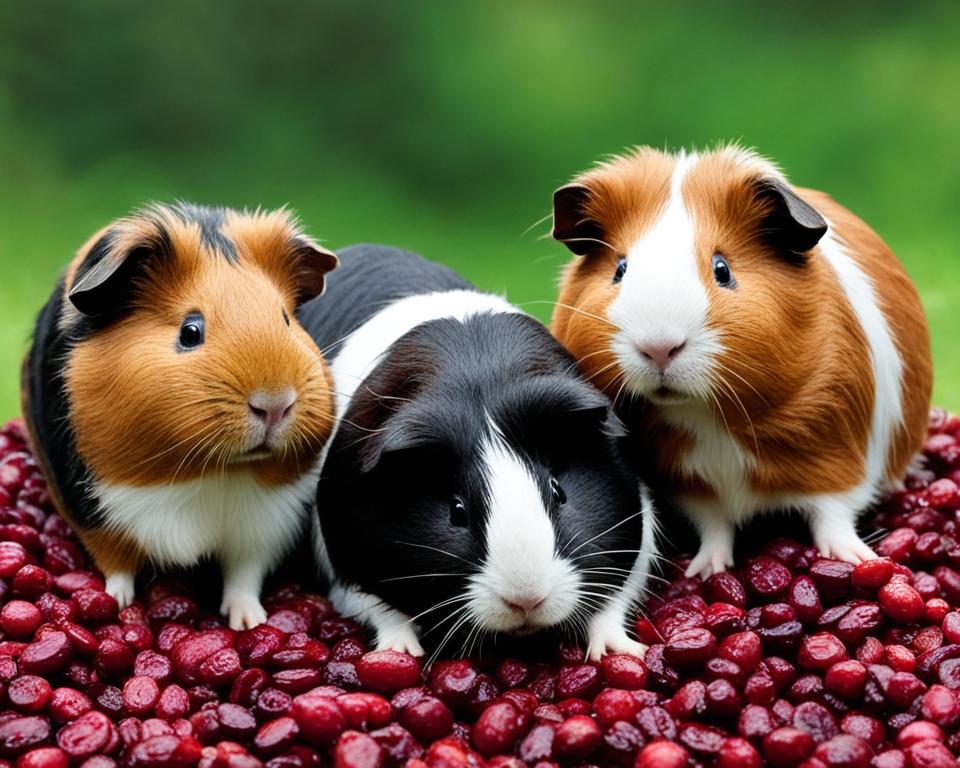
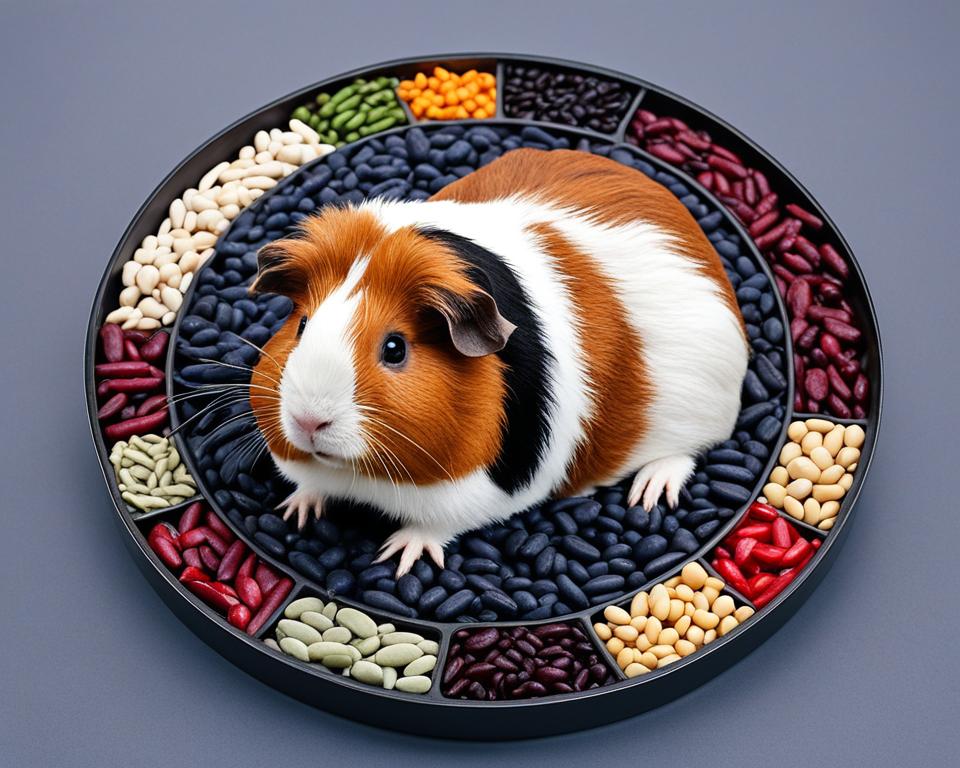
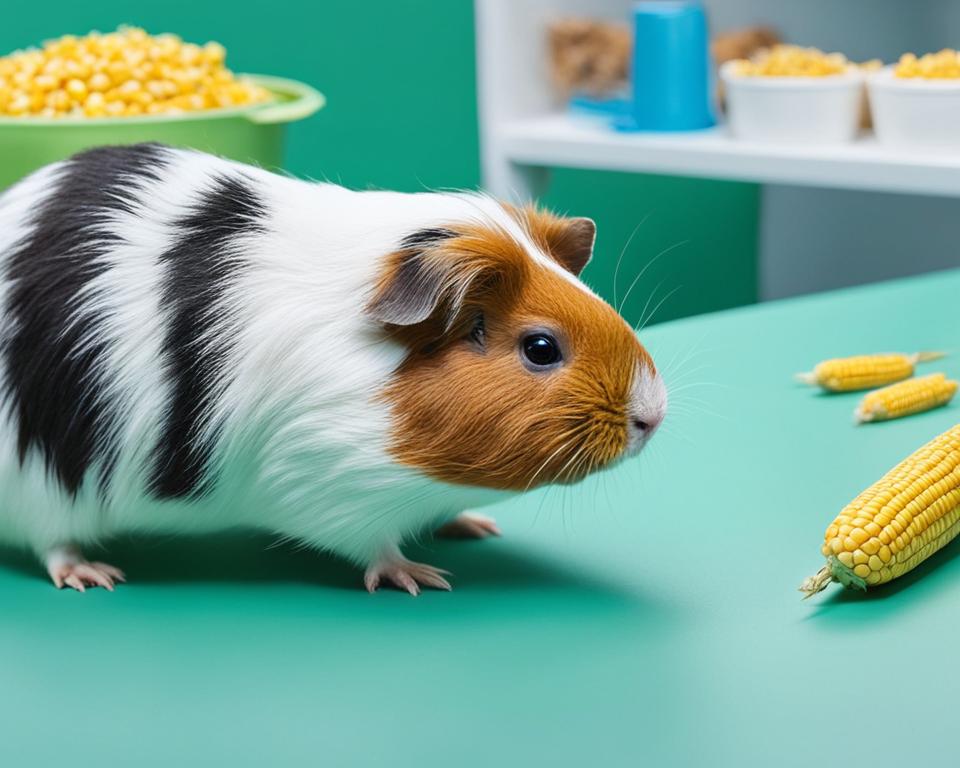
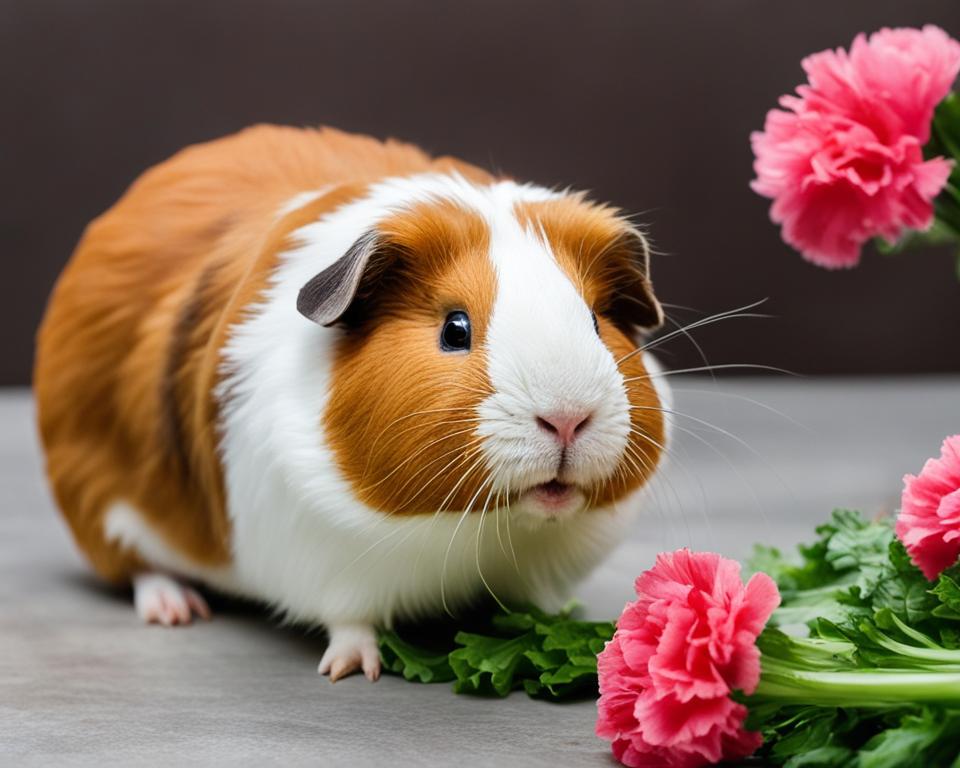
Leave a Reply